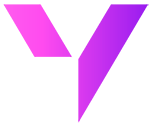Demand Sensing vs. Demand Forecasting: Which One Do Manufacturers Need?

"Forecasting accuracy is one of the most critical aspects of manufacturing. Long-term forecasts drive major capital decisions—whether to add a new production line or build a new factory—while short-term forecasts impact customer fulfillment, inventory levels, and financial health."
Frank Borovsky, B2Beyond
Manufacturers face a constant balancing act—predict demand too conservatively, and you risk stockouts. Forecast too aggressively, and excess inventory ties up capital.
Accurate demand prediction plays a crucial role in balancing production with market needs. However, companies often struggle with choosing between demand forecasting and demand sensing—two distinct yet complementary approaches to anticipating demand.
One provides long-term stability, the other ensures real-time adaptability. Which one is right for your business?
This article explores the key differences between demand forecasting and demand sensing, helping manufacturers identify which approach best fits their needs.
Understanding demand forecasting
Demand forecasting is the practice of predicting future customer demand based on historical data, market trends, and statistical models. It involves analyzing past sales, seasonal fluctuations, and long-term patterns to develop a structured view of future demand.
Defining features:
- Long-term focus: Extends weeks, months, or even years into the future.
- Data-driven models: Uses historical sales data, economic indicators, and industry trends.
- Predictive analytics: Relies on algorithms such as time-series analysis and regression models.
- Supply chain planning: Supports inventory management, production scheduling, and procurement strategies.
When to use demand forecasting:
- Planning large production runs that require months of preparation.
- Establishing budgets and revenue projections.
- Managing inventory levels for stable, predictable product lines.
- Aligning long-term business strategies with expected market conditions.
Understanding demand sensing
Demand sensing is a more dynamic approach that leverages real-time data, AI, and machine learning to detect sudden shifts in demand. Instead of relying solely on historical data, it continuously updates forecasts based on current market signals such as sales trends, weather patterns, social media sentiment, and economic fluctuations.
Defining features:
- Short-term focus: Provides immediate insights, often in daily or weekly cycles.
- Real-time data analysis: Uses inputs from POS systems, IoT sensors, online transactions, and external market trends.
- AI-driven adjustments: Adapts to demand shifts quickly using machine learning algorithms.
- Risk mitigation: Helps manufacturers respond to unexpected disruptions, such as supply chain bottlenecks or demand spikes.
When to use demand sensing:
- Managing perishable or fast-moving consumer goods (FMCG) with volatile demand.
- Responding quickly to sudden market shifts or external disruptions.
- Optimizing short-term production schedules and reducing stockouts.
- Adjusting promotions and pricing based on emerging trends.

With Fusion, a leading semiconductor manufacturer that needed a more agile forecasting solution improved data accuracy, ensured workflow consistency, and enhanced forecasting precision resulting in a scalable forecasting model, reducing costs and increasing profitability.
Which one do manufacturers need?
In the forecasting fireside chat that Valorx hosted, Frank Borovsky stated, "Accurate forecasting keeps operations smooth, while errors disrupt inventory, customer trust, and financial stability."
Chris Lim, Enterprise Solutions Architect at Valorx, notes: "Siloed data leads to outdated, inaccurate forecasts, making informed decisions difficult." Lim works closely with clients navigating complex forecasting needs, helping them uncover insights and achieve greater accuracy in their decision-making.
Mark Schmidt, Senior Director at Salesforce, points out: "Demand planning teams often distrust sales data, leading to misaligned forecasts. A unified process is essential."
The answer depends on business goals, product lifecycle, and market volatility. In many cases, demand forecasting and demand sensing should be used together.
- For stable, long-term planning → Demand forecasting is essential for capacity planning and supply chain alignment.
- For agile, short-term decision-making → Demand sensing helps manufacturers react to immediate market fluctuations.
- For manufacturers balancing both → A hybrid approach integrating forecasting models with real-time demand signals ensures a more adaptive and resilient supply chain.
How Valorx Fusion enhances demand planning
Fusion enhances demand planning for manufacturers by seamlessly integrating forecasting directly into Salesforce. This integration allows sales teams to update forecasts within their usual workflows, ensuring that demand predictions are both timely and accurate. By embedding these capabilities into the core CRM process, Fusion delivers real-time insights that help manufacturers fine-tune inventory management, optimize production planning, and better align resources with market demands.
Experience Valorx Fusion live.
Achieve a more agile and responsive supply chain that supports strategic decision-making.
In conclusion
The best approach isn’t choosing between demand forecasting and demand sensing—it’s using both.
With Valorx Fusion, manufacturers can bridge the gap between long-term planning and real-time market shifts.

